Throughout the entire ocean, there are only 7 living species of sea turtles.
Five of those seven are found in Florida.
Green, Loggerhead, Leatherback, Hawksbill, and Kemp’s Ridley.
Green Sea Turtle
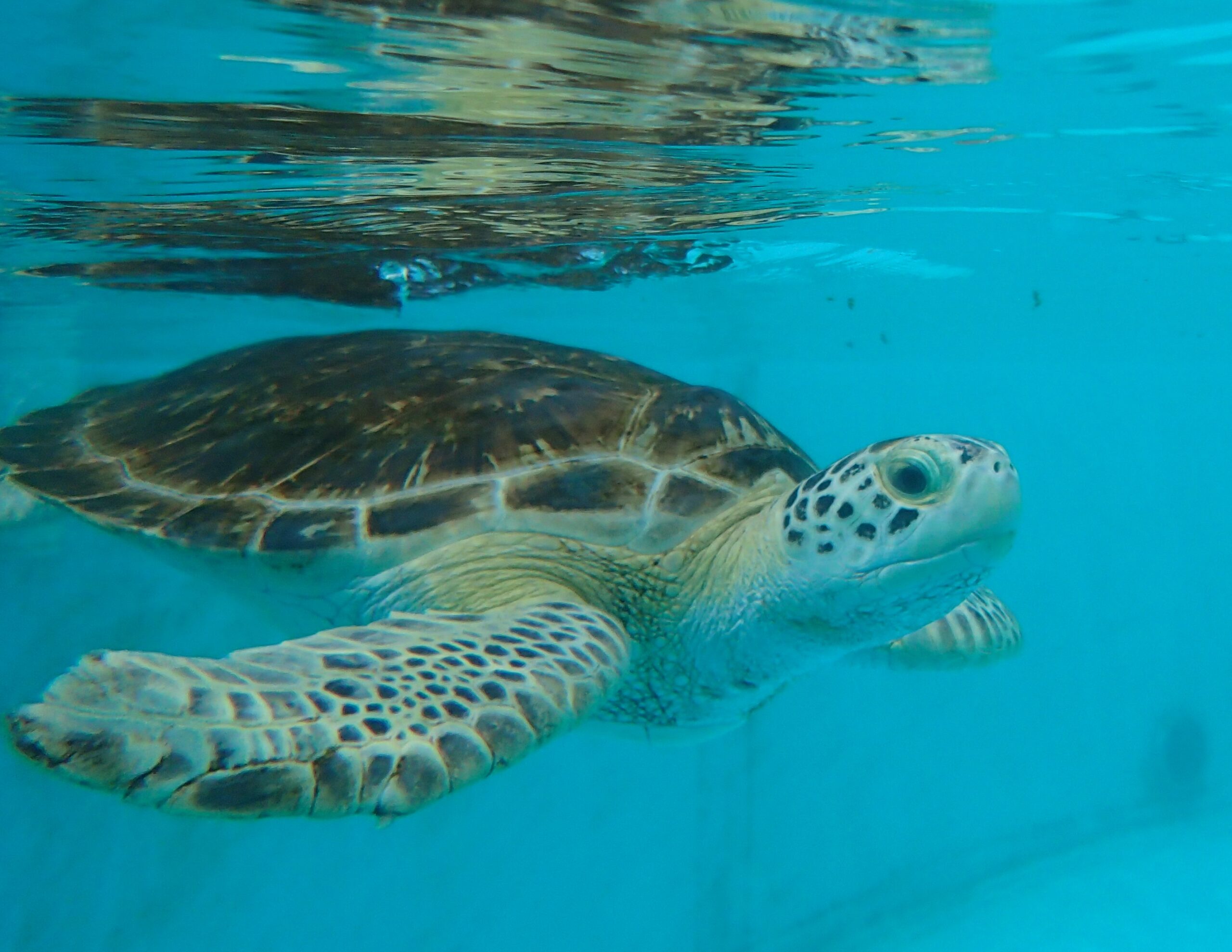
Scientific Name: Chelonia mydas
Status: Endangered
Size: 3-5 ft long, weighing 200-500lbs
Diet: Primarily herbivores – feeding on seagrass and algae
Range: Found worldwide, primarily in tropical waters
Fun Fact: Like their name suggests, their shells are not actually green. They eat so much seagrass, that the tissue and fat inside of their bodies turn green overtime.
Loggerhead Sea Turtle
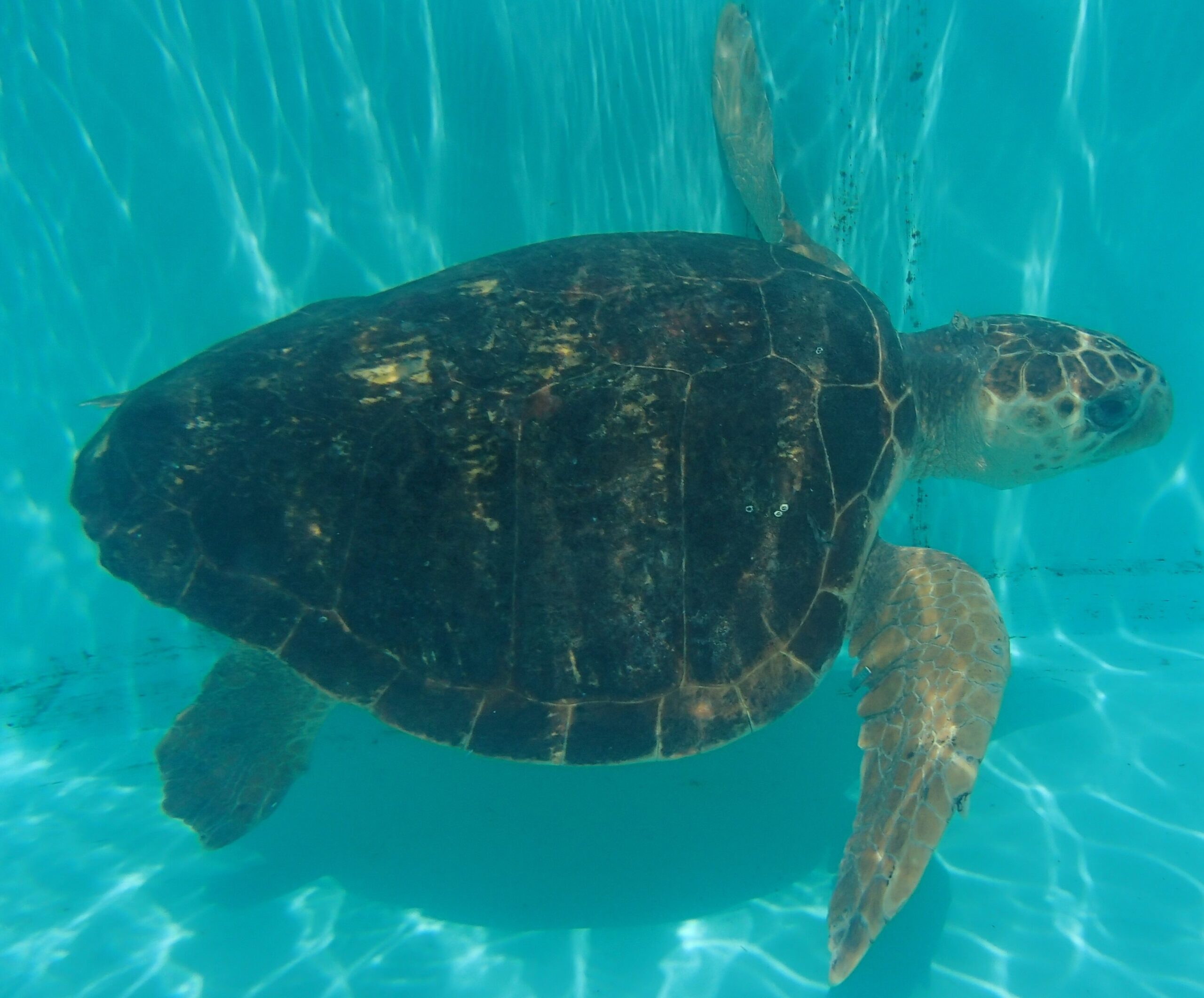
Scientific Name: Caretta caretta
Status: Threatened
Size: 2-4 ft long, weighing 200-350lbs
Diet: Feeding on hard-shelled invertebrates, crabs, lobsters, and conch
Range: Mainly found in temperate waters. Individuals have tracked to be migrating over 7,500 miles from nesting beaches in Japan to feeding grounds off the coast of Mexico.
Fun Fact: Their jaw muscles have a similar bit force to a White Shark – approximately 900 psi.
Leatherback Sea Turtle
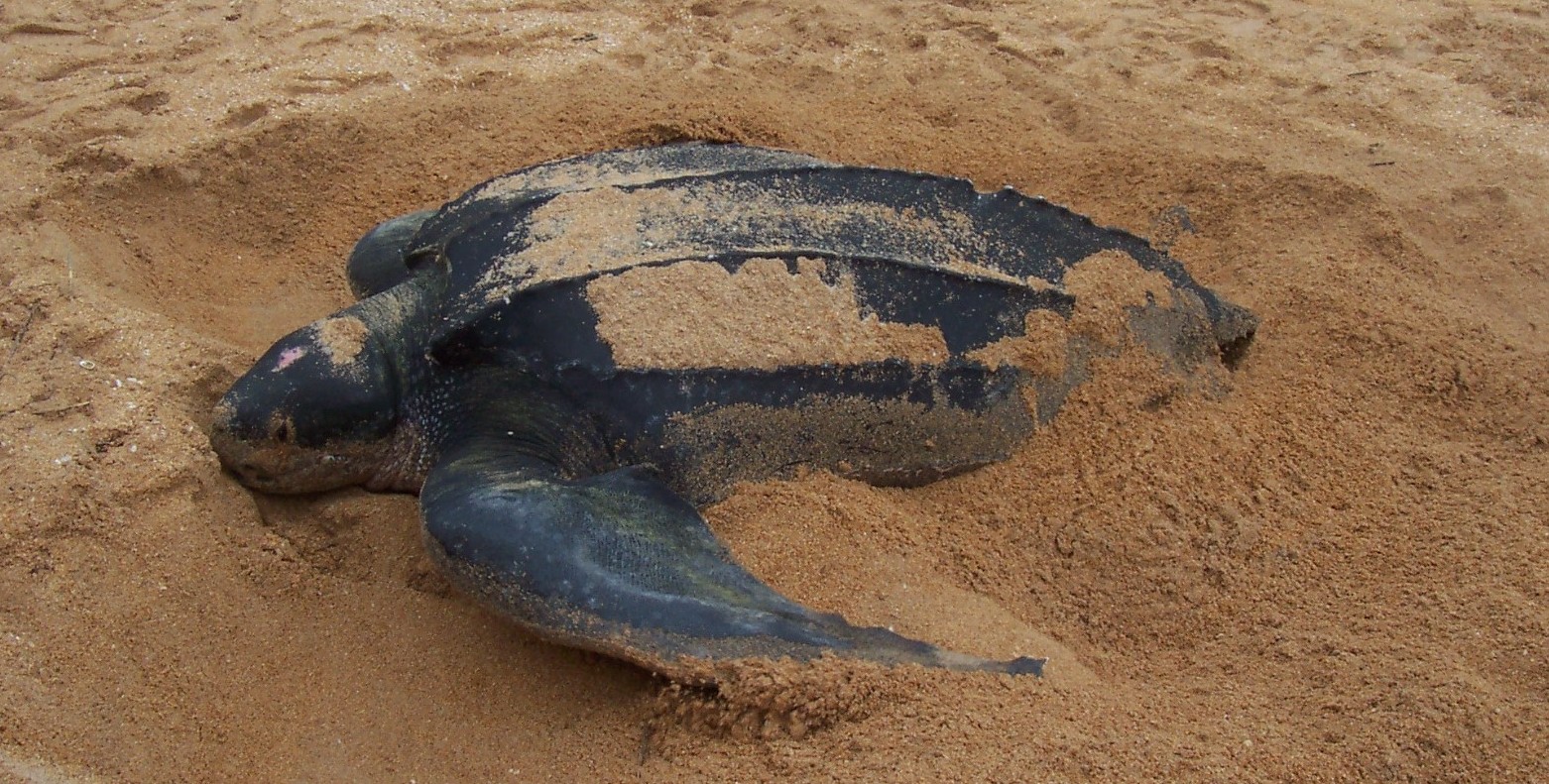
Scientific Name: Dermochelys coriacea
Status: Critically Endangered
Size: 4-6 ft long, weighing up to 2,000lbs
Diet: Feeding primarily on jellies
Range: Found worldwide – preferably deep waters up to 4,000 ft deep
Fun Fact: This species is the only one to have a “soft shell.” It is made up of cartilage versus hard-shell sea turtles being made up of keratin. This allows them to expand and contract their bodies to withstand the changes in water pressure during their diving patterns.
Hawksbill Sea Turtle

Scientific Name: Eretmochelys imbricata
Status: Critically Endangered
Size: 2-3 ft long, weighing 100-150lbs
Diet: Mainly feeding on sponges and small invertebrates
Range: Found in tropical waters – preferably near coral reefs where sponges are in abundance
Fun Fact: “Tortoise shell” materialistic items are harvested from Hawksbill sea turtles because of their unique and beautiful shell pattern.
Kemp’s Ridley Sea Turtle
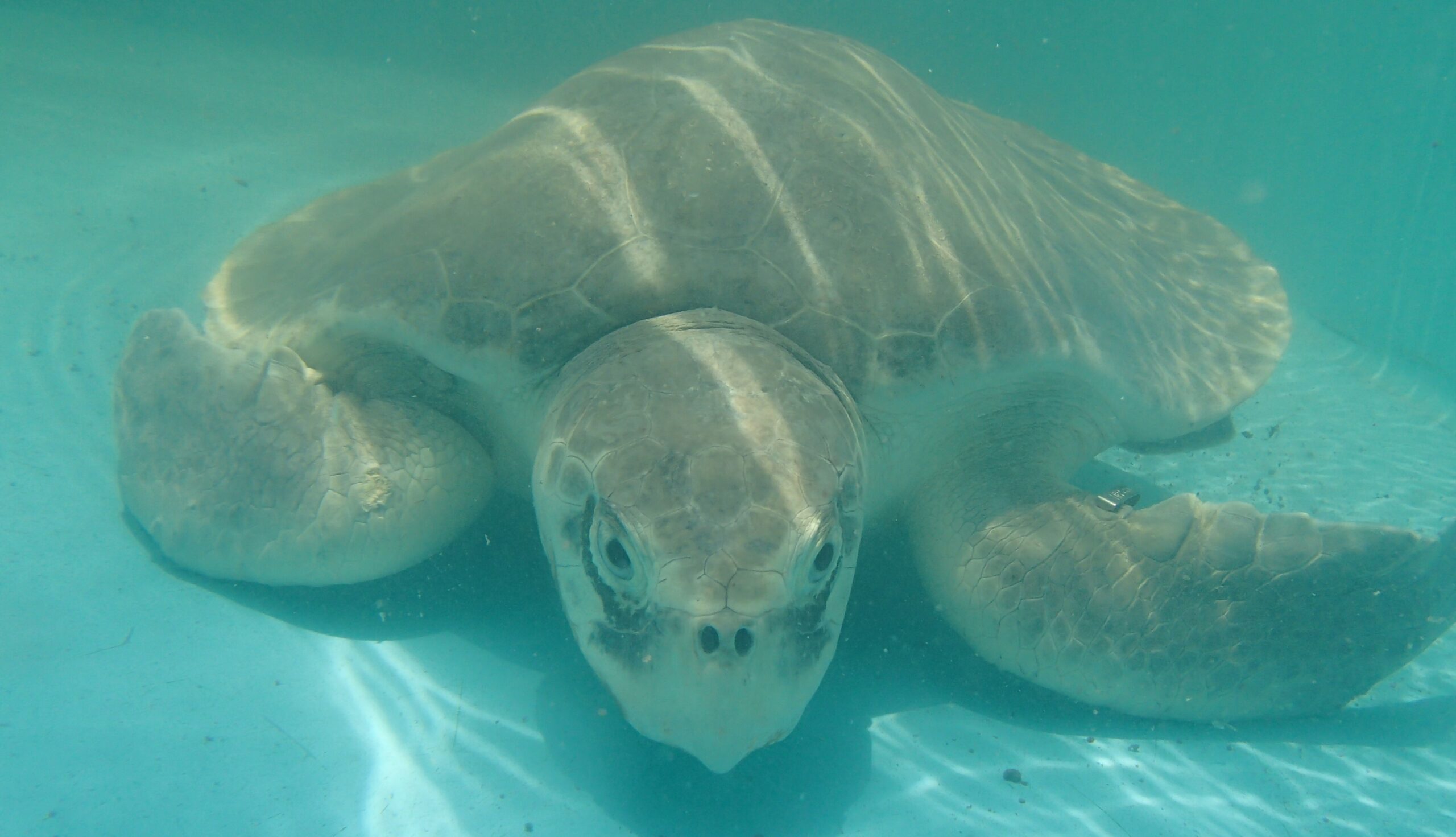
Scientific Name: Lepidochelys kempii
Status: Critically Endangered
Size: 2-2½ ft long, weighing 75-100lbs
Diet: Feeding on crabs, lobster, fish, and jellies
Range: Primarily found in the Gulf of Mexico and occasionally in the Atlantic and Caribbean Ocean
Fun Fact: They have a unique nesting behavior called “arribada,” where they nest together in broad daylight. In 1947, over 42,000 Kemps simultaneously nesting during one of these arribadas. However, in 1978, there were only 500 nesting females recorded.
The two species NOT found in Florida water are the Olive Ridley and Flatback sea turtles.
Olive Ridley Sea Turtle
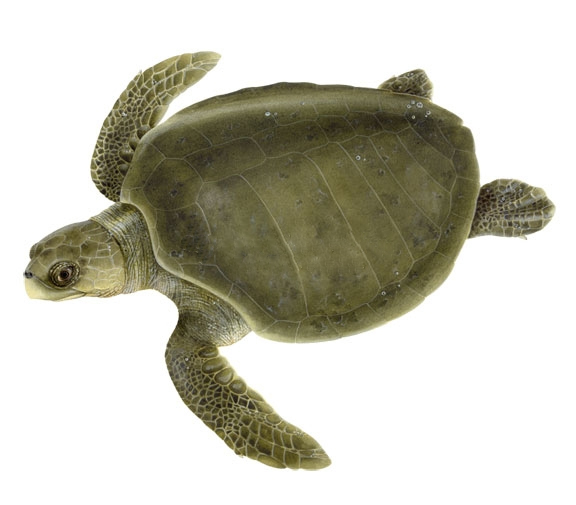
Scientific Name: Lepidochelys olivacea
Status: Endangered
Size: 2-2½ ft long, weighing 75-100lbs
Diet: Feeding on crabs, lobsters, fish, and jellies
Range: Found mainly in the Pacific and lower Atlantic Ocean
Fun Fact: This species is named after the olive green color of their shell. Also having the greatest number of scutes (shell scales) of any sea turtle.
Flatback Sea Turtle
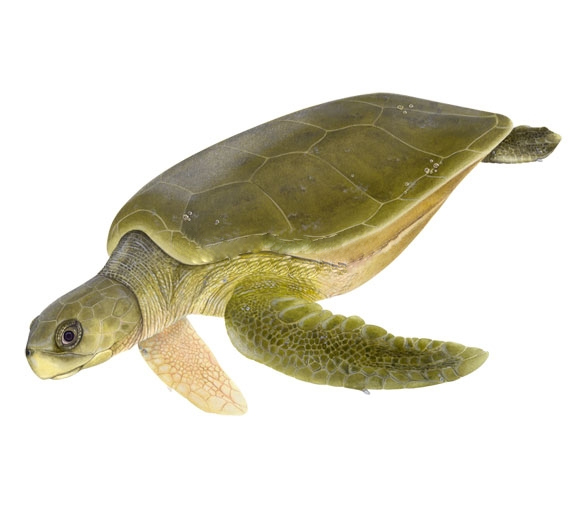
Scientific Name: Natator depressus
Status: Vulnerable
Size: 3 ft long, weighing 200lbs
Diet: Feeding on seas cucumbers, sea pens, soft corals, and jellies
Range: Found only around Australia
Fun Fact: This species is named after the flatness of their shells.
